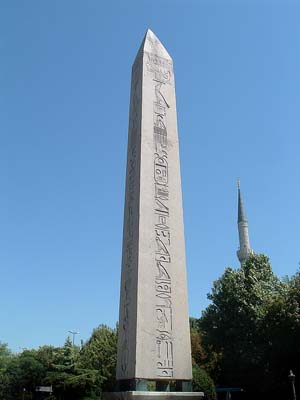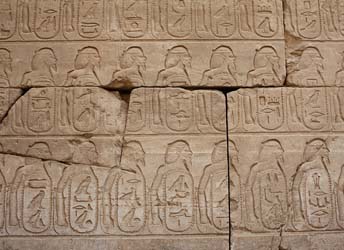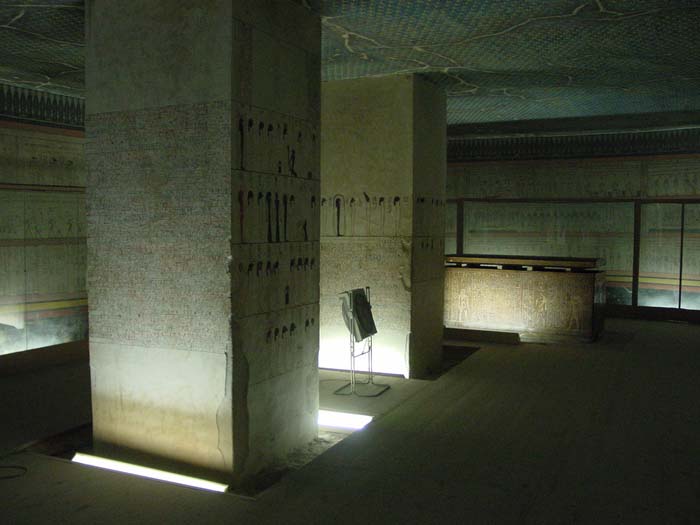Thutmose III
Thutmose III, sixth Pharaoh of the 18th Dynasty, is often called “The Napoleon of Ancient Egypt.” He reigned from 1479 BC up until his death in 1425 BC and was responsible for the golden age of ancient Egypt. He amassed great wealth for Egypt. As a great ruler and brilliant general, Thutmose III established “Pax Egyptica.” This term means a period of great peace and prosperity for his people. Thutmose III was a national hero and the best Pharaoh ancient Egypt has ever seen.
Thutmose III’s Family Tree
The son of Thutmose II and a secondary wife, Iset, Thutmose III rose to co-regency with Hatshepsut (his father’s chief wife) when Thutmose II died in 1479 BC. However, because Thutmose III was still a young boy of only seven, Hatshepsut ruled on her own while Thutmose III spent much of his time in the army earning military training.
Thutmose III had nine children with his wives. His chief wife, Satia, bore him his first son, Amenemhat, who predeceased Thutmose III. Amenemhat was the original successor to the throne. When he died, Amenhotep II, son of Thutmose III and secondary wife, Hatshepsut-Meryetre (not to be confused with his aunt Hatshepsut), succeeded him. His many other wives were Nebtu, Menwi, Merti, Menhet and Neferure.
Achievements

© Jan - Obelisk of Thutmose III from Karnak
Thutmose III gained the loyalty of his subjects and was also a fair captor of the cities he conquered. He was an accomplished statesman, horseman and athlete, lover of the arts, an archer and a keen military genius.
He is credited with being the first person ever in history to take full advantage of the sea during a campaign of war against the wealthy kingdoms of Phoenicia.
Through the spoils of war, Thutmose III built many beautiful temples around Egypt. Thutmose III’s first military campaign is recorded in detail in Karnak, on the walls of a temple he built there. On the seventh pylon is an enormous relief of Thutmose III smiting his enemies.
Military Campaigns
Thutmose III’s military campaigns are among his greatest achievements as Pharaoh of Egypt. Overall, he launched at least 16 military campaigns including those in Palestine, Syria, Nubia and in Mesopotamia.
Historians believe Thutmose III was not fond of his aunt and co-regent Hatshepsut. She was not a warrior and allowed Egypt’s neighbors to believe they could free themselves from Egypt. Thutmose III’s formative years spent in the army made him an ingenious warrior who was not afraid of battle. Throughout his reign, he captured nearly 350 cities during his leadership of Egypt and gained the complete respect of Egypt and the entire region.

© Michael Lusk - Thutmose III list of defeated enemies
His march to Gaza to conquer the city of Megiddo was marked by an unexpected decision to take a treacherous and unlikely approach through a narrow path over the mountains. The city of Megiddo was defeated. The taking of Megiddo was important for Egypt’s economy. Without Megiddo’s open trade routes, Egypt could not flourish. The great king’s army of about 15,000 men stopped the uprising in this area and expanded Egypt to an extent it had never known before.
Thutmose III never lost a battle. He also launched attacks on cities in Palestine, Israel and Nubia, as well as coastal areas of Syria and Lebanon. To keep conquered leaders from attacking Egypt, he required that they send their children to Egypt for their education. This both solidified ties with the Egyptian empire and greatly deterred future attacks.
Thutmose III’s Tomb
Thutmose III was buried in the Valley of the Kings (KV 34) and is considered to be one of the most sophisticated tombs. Although the entrance to the tomb was some 90 feet off of the ground, it had been pillaged by tomb robbers when it was discovered in the modern day by Egyptologist, Victor Loret’s, workmen. The burial chamber walls resemble a large ornamental scroll and have the complete “Book of Amduat” written on them. Ancient Egyptians referred to this book as “The Book of the Secret Room” and it was centered around the existence of an afterlife. A proclamation found inside the tomb read that Thutmose III had reigned just one month short of 55 years.

© Sebastian Niedlich - Interior of the tomb of Thutmose III
Inside the tomb, only the red quartzite sarcophagus, wooden statues of the king and other gods, bits of wooden model boats, pottery and the bones of animals were found. Even Thutmose III’s mummy wasn’t inside the tomb when it was discovered. Thutmose III had been buried at Deir el-Bahri, the mortuary temple of Hatshepsut.
Thutmose III’s mummy was in bad condition when it was found. The pharaoh was short, not even five feet tall. Currently, Thutmose III’s mummy is kept at the Cairo Museum.
Thutmose III Quick Facts
- Considered to be the greatest Pharaoh of ancient Egypt, even surpassing Ramses II.
- Thutmose III amassed Egypt’s wealth through successful strategic warfare; and was humane to those captured.
- Considered a national hero and was highly revered during his time and for a long time after his death.
- Honored the places he saw during his war campaigns by having the flowers and plants carved onto the buildings at Karnak.
- Erected many obelisks around Egypt. Today, they can be found in London, Central Park, Rome and Istanbul today.
- A true military genius, he showed an understanding of logistics and lines of supply, the necessity of moving quickly and surprise attacks.

